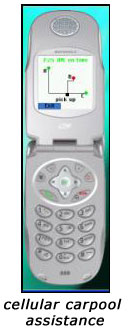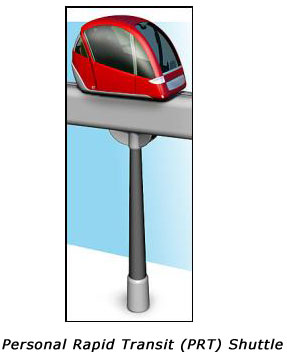The Smart Land Use (SLU) movement is undertaking very important work evolving the 20-acre transit village paradigm, but is ignoring massive trends that affect many more people than SLU efforts do. The movement must develop new ideas and technologies to bring SLU to more people and to make Rail~Volution relevant.
 My daughter Emma and her generation face a less sustainable and livable future. California serves as a dreadful model for the nation: 600,000 new residents per year. Jobs moving to distant, outer ring suburbs. Housing growing ever more costly. Seemingly permanent public sector fiscal constraints. (1)
My daughter Emma and her generation face a less sustainable and livable future. California serves as a dreadful model for the nation: 600,000 new residents per year. Jobs moving to distant, outer ring suburbs. Housing growing ever more costly. Seemingly permanent public sector fiscal constraints. (1)
The Smart Land Use (SLU) movement is undertaking crucial work. Enthusiasts will be out in force at the September 18-22 Los Angeles Rail~Volution Conference. The SLU toolkit is compelling: pedestrian-friendly design, unbundled parking charges, location efficient mortgages, reduced parking requirements, car sharing, bike stations, new funding mechanisms, affordability strategies, in-fill techniques, regional visioning, etc. (2) Unfortunately, this compelling toolkit is not bringing about any perceptible change. Without a significant intervention, the new residents will continue to move to single-use, planned communities farther away from jobs, chewing up Central Valley land.
At a September SLU forum in Berkeley, a prominent spokesperson explained that the movement's goal was to streamline the process of bringing about Transit-Oriented Development (TOD) and "make the process of bringing about projects like Fruitvale Station (a BART transit village) easier." This "evolutionary" approach ignores the forest by concentrating on a few trees at a time.
As Fred Keely, Executive Director of the Planning and Conservation League laments,
"A few twenty-acre transit villages represent an insignificant blip in the face of California's projected growth." (3)
Rail~Volution 2004 should think more aggressively and ambitiously, well beyond twenty-acre TOD, and beyond the oft-dreamed-of 2,000-foot radius (292 acres) TOD. The root word for Rail~Volution should be "revolution," not "evolution."
Perhaps the movement's ambitions have been dampened by critics. The conference session entitled, "Responding to the Critics," is evidence of this backward-looking defensiveness. More time should be spent looking forward.
The Corbusier Cure
The largest national opportunity for SLU transformation lays in our monuments to Le Corbusier and the Single Occupancy Vehicle, our 200+ suburban Edge Cities and Major Employment Centers (MEC). (4)
As Berkeley Professor Robert Cervero states,
"Parking lot laden office parks are one of our biggest blights, but they also represent our largest opportunity for in-fill development because of their inefficient use of land." (5)
All of these MECs have transit-friendly density of 10,000 to 50,000 people per square mile. Many of these asphalt-dominated landscapes have more than fifty percent impermeable surface.
 Cities21 believes that the addition of PRT shuttle and new mobility to the SLU toolkit, combined with ridesharing and transit is the "silver bullet" to transform MECs, creating both a vibrant "place" and a bustling transit "node," eliminating the need for place-killing station parking.(6) One of the main points of an important 2002 Brookings SLU paper addresses how to balance the conflict between place and node.(7) Given California's trends, a more ambitious approach is required that demands both place and node simultaneously.
Cities21 believes that the addition of PRT shuttle and new mobility to the SLU toolkit, combined with ridesharing and transit is the "silver bullet" to transform MECs, creating both a vibrant "place" and a bustling transit "node," eliminating the need for place-killing station parking.(6) One of the main points of an important 2002 Brookings SLU paper addresses how to balance the conflict between place and node.(7) Given California's trends, a more ambitious approach is required that demands both place and node simultaneously.
Cities21's "New Suburbanist" silver bullet proposal provides car-free access to most daily activities for children, seniors, residents, shoppers, and workers. It lowers the cost-of-living and reduces time spent fighting traffic, grabbing back time and money for beleaguered families.
Rail~Volution staffers are quick to dismiss any tool not already proven in service (such as cellular carpool assistance or PRT feeder/distributor transit). Unfortunately, within the current public policy context, Rail~Volution's "wait-and-see" position serves to actively oppose expansion of the SLU toolkit. Innovation is already difficult: research in the field of "innovation and public policy" has shown the significant challenges faced in bringing about major innovation (such as a Transportation Demand Management paradigm shift or the first new transit mode in 90 years) in a mature democracy with entrenched capitalism. The idea that major SLU toolkit enhancements can be brought about without the active support and intellectual contribution of the mainstream SLU movement is naive.

A Challenge to Rail~Volution 2004
Cities21 makes the following challenge for Rail~Volution 2004:
Develop a plan for a sustainable and livable future for Emma's generation.
The plan should include quantifiable objectives placed on a timeline. The objectives should be sufficiently ambitious to address California's trends. The progress towards meeting these objectives should be tracked.
The plan should augment, rather than tweak, the SLU toolkit. Any approach is fine. The suburban silver bullet is not required. Emma doesn't care about tactics.
Cities21 proposes the following national objectives, which, though ambitious, barely begin to address the trends:
By 2014, transform 200 MECs into mixed-use transit villages with less than half of trips via single occupancy vehicle. Affect 240,000 acres and 6M people. Remove 2M parking spaces and in-fill with 800,000 housing units in a financially sustainable manner.
Steve Raney is founder of Cities21, a Smart Transportation and Land Use nonprofit. His background includes: Berkeley Transportation Planning Masters, Columbia MBA, RPI Computer Science masters, Microsoft, Citigroup, Silicon Valley start-ups, Project Manager for BART's Group Rapid Transit study, and Training Coordinator for Habitat for Humanity.
Notes/ References
(1) From "2020 California Trends for Smart Land Use", Berkeley Professor Elizabeth Deakin's California Trends Project.
(2) Hank Dittmar and Gloria Ohland, The New Transit Town, Best Practices in Transit-Oriented Development.
(3) Quoted at a February 5, 2004 Sierra Club / Greenbelt Alliance "Environmentalism and Growth" public forum in Palo Alto.
4 In the 1920's, the evil genius Le Corbusier envisioned high-rise office towers set in parks with vast roads feeding the towers.
(5) From the author's 188-page Suburban Silver Bullet: PRT Shuttle + New Mobility Halves Solo Commutes.
(6) A description can be found at: http://www.cities21.org/SilverBullet.htm.
(7) Dena Belzer and Gerald Autler, Transit-Oriented Development: Moving From Rhetoric To Reality, Brookings Institution, June 2002.

Maui's Vacation Rental Debate Turns Ugly
Verbal attacks, misinformation campaigns and fistfights plague a high-stakes debate to convert thousands of vacation rentals into long-term housing.

Planetizen Federal Action Tracker
A weekly monitor of how Trump’s orders and actions are impacting planners and planning in America.

Chicago’s Ghost Rails
Just beneath the surface of the modern city lie the remnants of its expansive early 20th-century streetcar system.

Bend, Oregon Zoning Reforms Prioritize Small-Scale Housing
The city altered its zoning code to allow multi-family housing and eliminated parking mandates citywide.

Amtrak Cutting Jobs, Funding to High-Speed Rail
The agency plans to cut 10 percent of its workforce and has confirmed it will not fund new high-speed rail projects.

LA Denies Basic Services to Unhoused Residents
The city has repeatedly failed to respond to requests for trash pickup at encampment sites, and eliminated a program that provided mobile showers and toilets.
Urban Design for Planners 1: Software Tools
This six-course series explores essential urban design concepts using open source software and equips planners with the tools they need to participate fully in the urban design process.
Planning for Universal Design
Learn the tools for implementing Universal Design in planning regulations.
planning NEXT
Appalachian Highlands Housing Partners
Mpact (founded as Rail~Volution)
City of Camden Redevelopment Agency
City of Astoria
City of Portland
City of Laramie


























